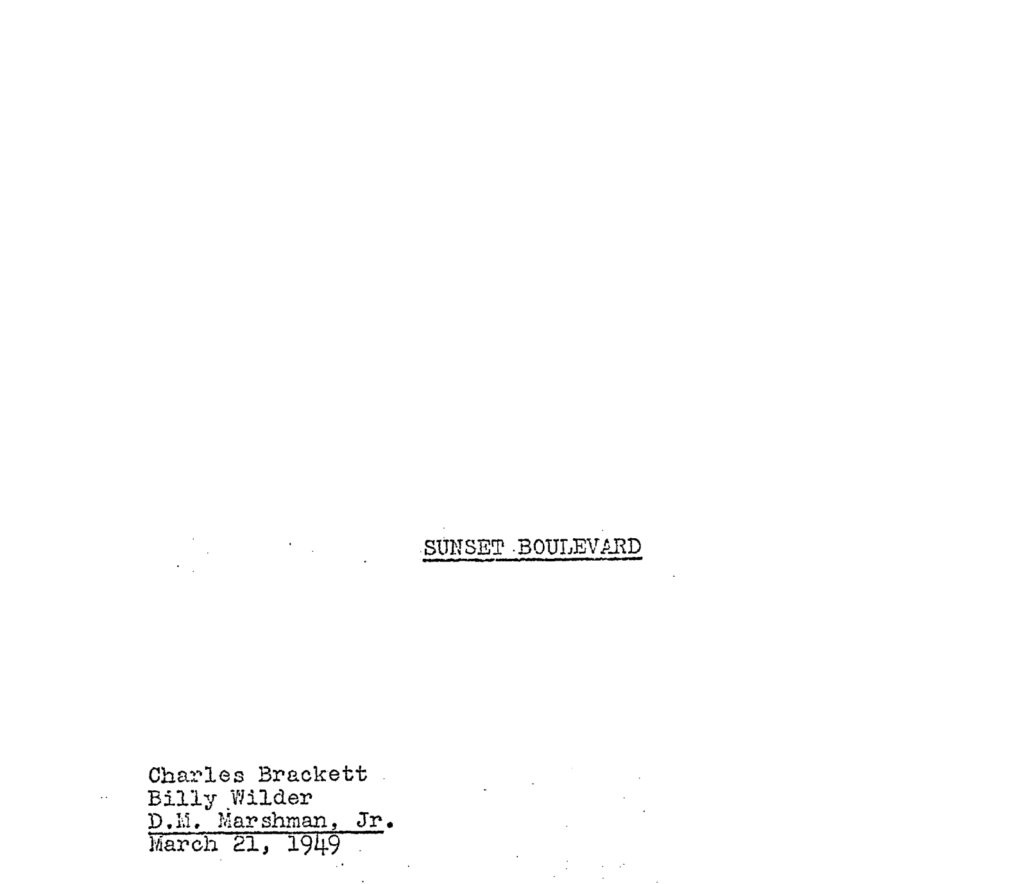Sunset Boulevard, directed by Billy Wilder and released in 1950, is a quintessential film noir that delves into the darker side of Hollywood. Written by Wilder, Charles Brackett, and D.M. Marshman Jr., the screenplay is celebrated for its sharp wit, haunting characters, and biting commentary on the film industry. You can scroll down to read the script.
Key Elements of the Script
Nonlinear Structure
The screenplay employs a nonlinear structure, beginning with Joe Gillis’s death and then recounting the events leading up to it. This technique creates suspense and engages the audience from the outset.
Richly Drawn Characters
- Joe Gillis: A cynical and pragmatic writer whose desperation leads him into a morally compromising situation.
- Norma Desmond: A tragic figure whose delusions of grandeur mask her deep loneliness and fear of obsolescence.
- Max von Mayerling: A loyal servant whose devotion to Norma reveals layers of complex loyalty and love.
- Betty Schaefer: A symbol of idealism and integrity, contrasting sharply with the corrupted world Joe inhabits.
Themes of Fame and Obsolescence
The script explores the fleeting nature of fame and the devastating effects of obsolescence in Hollywood. Norma’s character embodies the tragic consequences of being discarded by an industry that once adored her.
Iconic Dialogue
The screenplay is renowned for its memorable lines, such as Norma’s famous declaration, “I am big. It’s the pictures that got small.” These lines capture the film’s themes and the characters’ psyches with precision.
5. Noir Aesthetics and Tone
Wilder’s script masterfully incorporates film noir elements, including a moody, atmospheric setting, morally ambiguous characters, and a sense of impending doom. These elements create a compelling and immersive narrative.

Click here to download the script (no registration required).
If you’d like to read more scripts, you can head to the Screenplays section.
To write your own screenplay using Scrite, head over to the Downloads section.